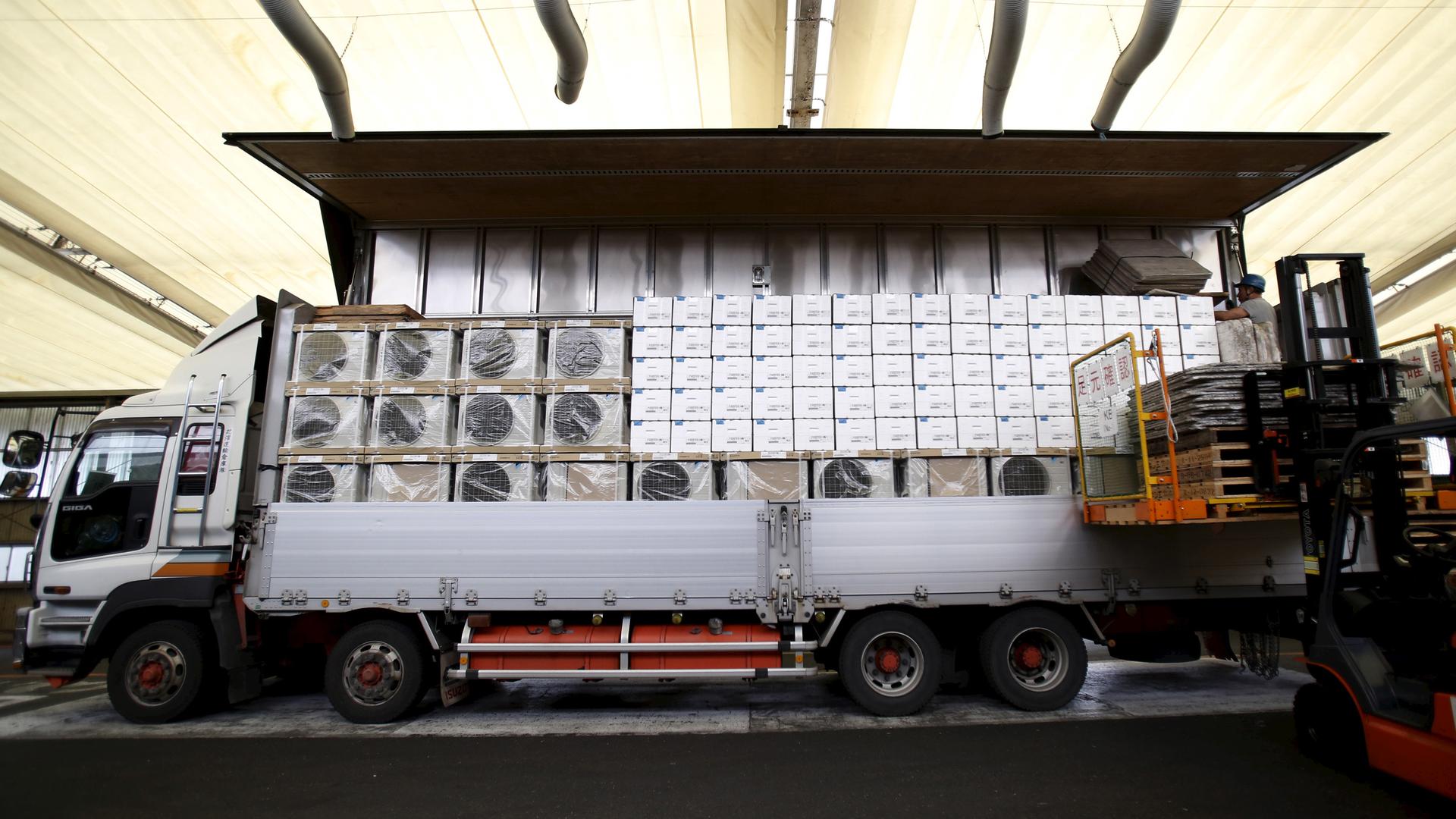Keeping our planet cooler just got a little easier
Air conditioners are loaded onto a truck for delivery. Most of the world's AC units cool air with chemicals that are big contributors to global warming. A new agreement forged in Kigali, Rwanda, will phase out those coolants over then next 30 years.
It’s October, so a lot of people aren't thinking about air conditioning right now. But spare a thought for this wonderful modern convenience, because the way we cool our homes and businesses is going to be changing over the next few years.
Most of the world's air conditioners, refrigerators and other cooling devices currently rely on chemicals that are really bad for the climate. The coolants are called HFCs — hydrofluorocarbons — and when they get into the air, they're super-powerful greenhouse gases.
But a few days ago, representatives from just about every country in the world agreed to phase out those chemicals at a meeting in Kigali, Rwanda.
For the climate, it's a really big deal.
“There's estimates out there that the reduction in global average temperature from this agreement will be somewhere near half a degree Celsius,” says Nihar Shah of the Lawrence Berkeley National Laboratory in California.
That likely will make a huge difference for the future of the planet, because the goal of last year's Paris climate agreement is to keep the rise in global temperatures to less than two degrees Celcius, and we're already almost halfway there.
Shah says the climate may even get a bonus benefit from the coolant deal.
“There's also potentially further reduction from improvements in efficiency,” he says. In other words, new cooling units will likely also use a lot less electricity, which means less carbon pollution from burning coal and natural gas.
So it's a win for the future of the planet. But there are concerns about the possible cost of new cooling technologies and what that could mean for the millions of people around the world who might not be able to afford them.
“A normal air conditioner costs something like $300, that’s the starting price,” says Indian journalist Chhavi Sachdev. She says that’s just barely within reach of India’s huge emerging middle class, who are just starting to buy air conditioning units in large numbers to stay comfortable in their tropical climate.
But greener alternatives are much more expensive.
“The one air conditioner that I found that has the best coolant, which has no global warming potential or ozone depletion potential, costs $1,050… That’s more than my monthly rent.”
Sachdev says Indians are proud of their participation in the global deal to phase out the offending coolants. But their concerns also helped lead to a three-tiered plan, which requires a quicker phase-out in richer and cooler countries, and a slower one in hotter and poorer ones.
Still, she says many Indians hope home-grown talent can help their country and the rest of the world quickly come up with affordable new cooling technologies.
She says one researcher told her, “it would be so nice if all the researchers and scientists that we’ve sent over to the US would come back and help us deal with these problems.”
Shah is one of those home-grown scientists. He doesn't work in India, but he got his engineering degree in Mumbai, and he now heads up research on new heating and cooling technologies at the Berkeley national lab in the States.
He’s confident that air conditioning will remain affordable in places like India, despite the phase-out of the current generation of refrigerants.
Already, Shah says, coolants are just a tiny fraction of the lifetime cost of air conditioners, so an increase in the cost of refrigerants wouldn’t dramatically affect a user’s total cost.
But he says new technologies that will bring safer and cheaper air conditioning and refrigeration are already on the horizon, and others will certainly emerge.
Shah says he’s encouraged by the responses to other such challenges in the past, such as decisions to get rid of highly polluting cars, or even the decision to eliminate a previous generation of coolants that were depleting the ozone.
“Historically the human species has responded to these moments with bursts of creativity and innovation,” Shah says. “I expect that the brightest people in the world will get together and try and … solve this problem. And it’s already happening.”
But he also says some of the future's best methods will be the same as today’s old — and inexpensive — standbys.
“Evaporative cooling, painting roofs white, planting more trees — there are so many other ways that we have had to cool ourselves,” Shah says. “I think those are never going to go out of fashion.”
